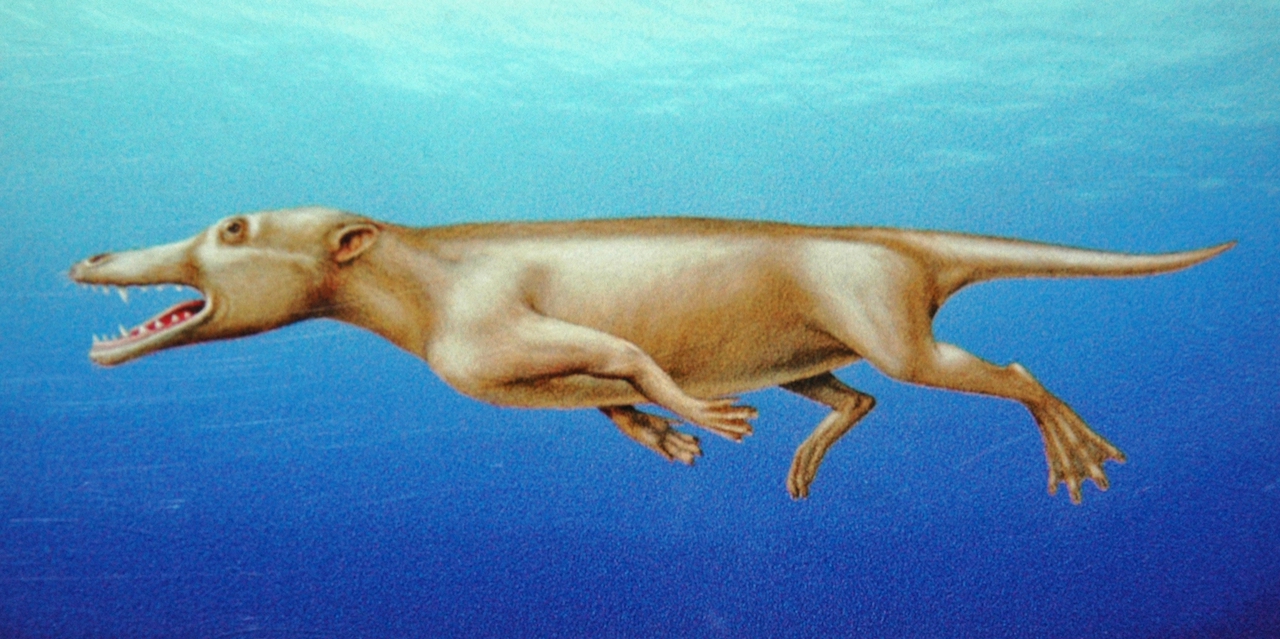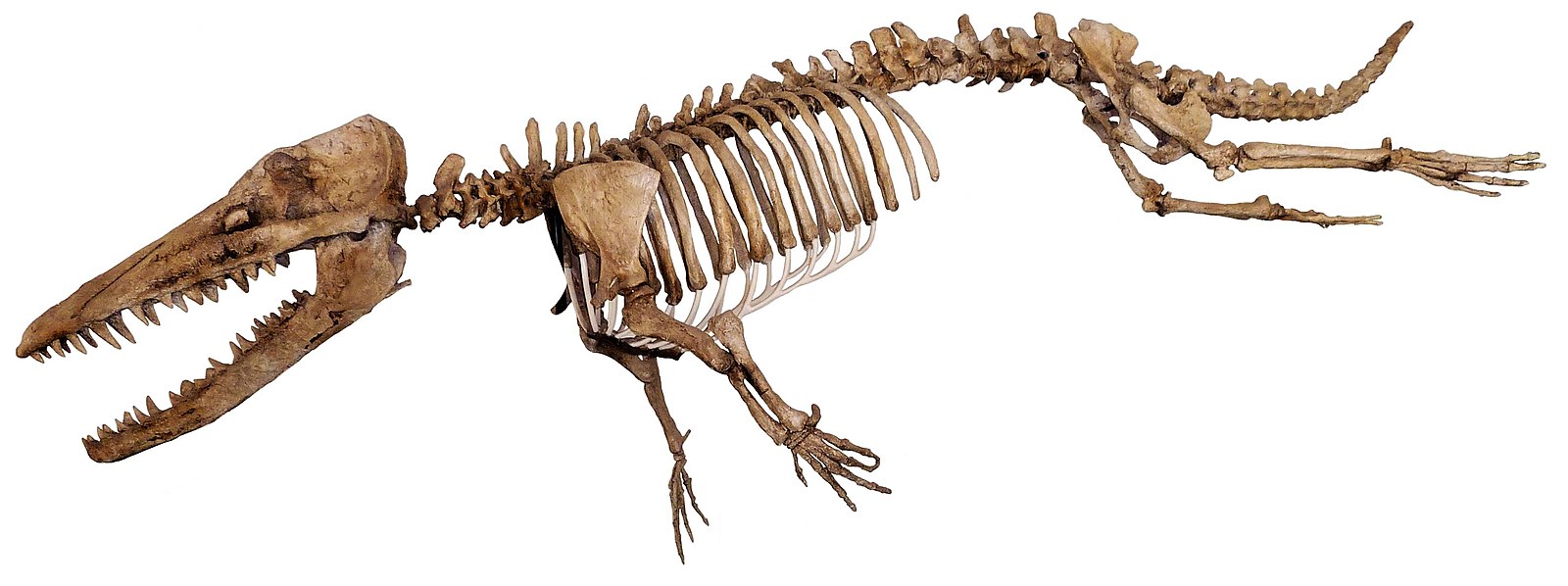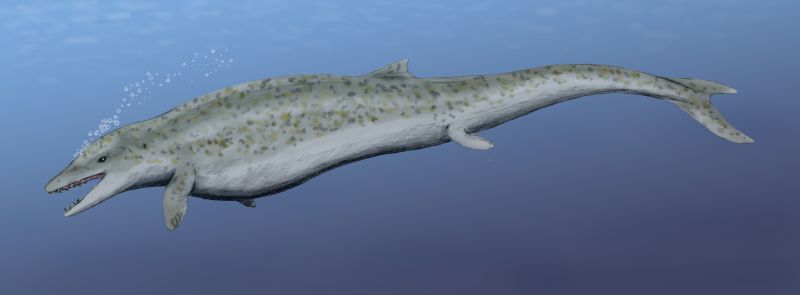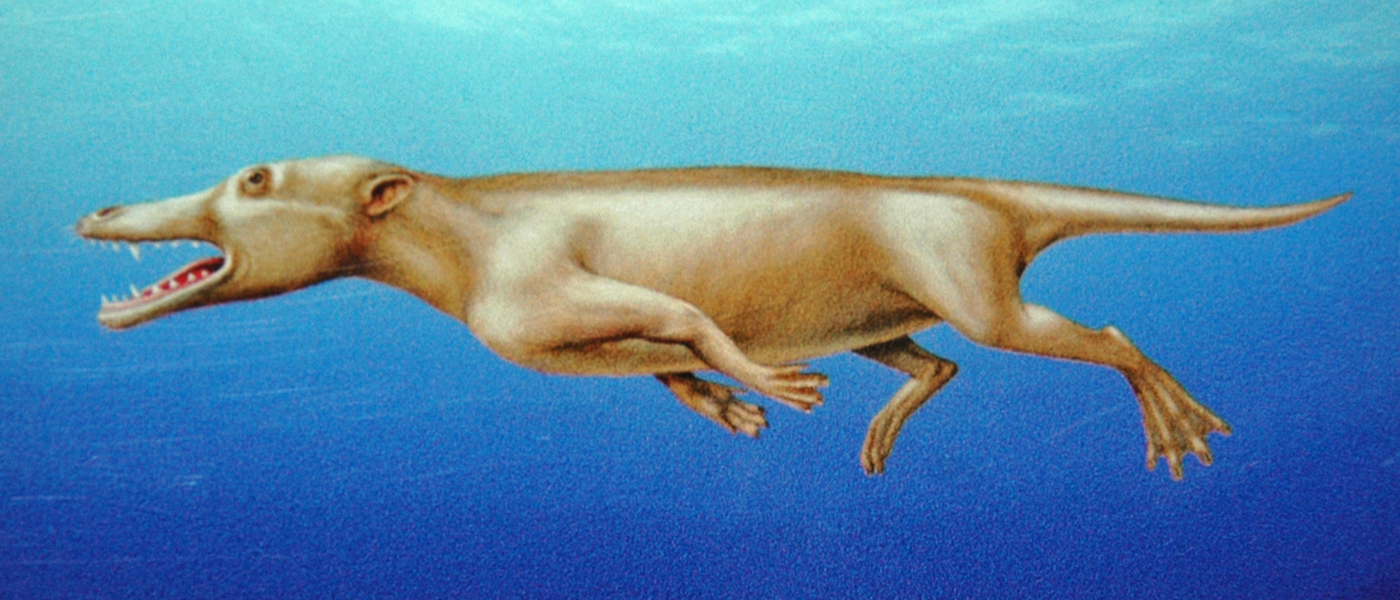Whale Evolution: A Rapid Transition from Land to Sea
Did you know that before whales became the giants of the deep, they strolled around on dry land just like most other mammals?
Whales’ land-dwelling ancestors lived about 50 million years ago. Pakicetus (pa·kuh·SEE- tuhs) was a goat-sized, four-legged creature that scientists recognize as one of the first cetaceans–the group of marine animals that includes dolphins and whales. It looked nothing like a modern whale! It lived on land, on the edge of lakes and riverbanks in what is now Pakistan and India. Pakicetus hunted small land animals and freshwater fish, and could even hear underwater.

One of Pakicetus’ relatives was Ambulocetus. It lived about 50 to 48 million years ago. Like Pakicetus, it spent time both in and out of water, but its large feet looked more like flippers than its ancestor's longer legs. It also used its tail for swimming.

Further along the evolutionary chain we find Dorudon (DOOR-ooh-don ) which lived 40 to 33 million years ago. Dorudon had actual flippers and tiny hind legs. It lived entirely in the water and was a good swimmer. It also gave birth to its young underwater.

Within 10 million years, cetaceans completely adapted to life in the water. That may sound like a long time to humans, but in evolutionary terms this is incredibly fast!
You can learn more about the whale's evolution at LSC's Blue Whale exhibition, here through Jan. 5, 2025.
